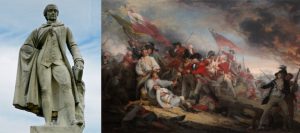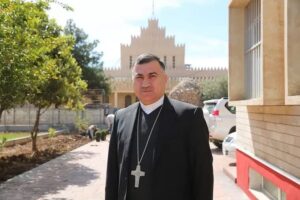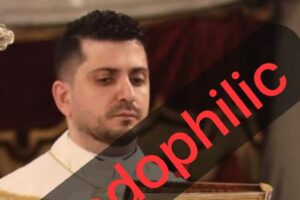In celebrating the 240th anniversary of American independence and the ratification of the Declaration of Independence, it’s worth remembering the role that Catholics and Catholicism played in 1776.
Bradley J. Birzer

In my essay “10 Things You Should Know About the American Founding” I focused on some little-known facts about the American Founding in general. The final three of those “10 things” mentioned Catholics and Catholicism, including how “every colony had some form of anti-Catholic law, except for Pennsylvania. The farther north one journeyed, the stronger the anti-Catholicism became.” This is not to suggest that Catholicism is incompatible with the Founding, but simply to note that Catholics were usually, at best, the odd men out and were to many colonists the dire symbol of all that was wrong with the world.
In celebrating the 240th anniversary of American independence and the ratification of the Declaration of Independence, it’s worth remembering the role that Catholics and Catholicism played in 1776.
- With the exception of Maryland—but only for a bit—each of the English colonies along the North American coastline despised and feared Roman Catholics as well as Catholicism. For most English Protestants, whether Reformed and Presbyterian or low-Church Anglican, Catholicism represented the corruption of the Christian faith. Catholics, far from being the brethren of Protestants, were the worst enemies—far worse than pagans or even Muslims. Why? Because Catholics, in the eyes of those Protestants, should have known better; that is, they should have seen the errors of their Catholic ways. In many respects, it was a case of nearness creating division. In New England, beginning in the 1640s, no citizen could enter a church on a Sunday morning without bearing both a bible and a firearm. When service ended, the men of the congregation secured the area before allowing women and children to leave the church, just in case Catholics might be out raiding that day. Even as late as the American Revolution, New England militia men screamed, “No king, no pope” as they charged into enemy lines.
- Protestants, however, were rarely tolerant of even other Protestants; Calvinists, for example, often hated Baptists as much as they did Catholics. Far from the “land of the free” that our textbooks usually portray, colonies sought not religious freedom and liberty, but rather religious autonomy. That is, they wanted freedom to worship as they saw fit, but they certainly did not believe that other sects should have the same rights. In this, the first century and a half of American colonization (with only a very few exceptions) were defined by a whole variety of intolerances. Because the frontier was huge, however, such tolerances could be alleviated—at least as long as you were willing to move west, away from the respectable folks. From the 1600s through 1774, America was really a sea of intolerance with islands of tolerance. Your freedom was essentially the freedom to choose which intolerance you liked best.
- Of the 13 original colonies, only Pennsylvania and Maryland offered anything that we might today recognize as religious toleration. Maryland, for an almost 30-year-long period prior to 1689, might very well have been the most tolerant place in the world when it came to religion. To enforce its religious toleration, however, it traded its freedom of speech. Society protected the diversity of religious communities by forbidding 1) blasphemy against the Holy Trinity; 2) mocking of Mary or any of the saints; and 3) referring to any Christian sect by a derogatory name. When radicals seized the provincial government in 1689, however, they undid all laws of religious toleration, demanding that every resident of Maryland honor the Church of England as the established Church. The new government of 1689, which lasted until 1774, for all intents and purposes outlawed Roman Catholicism, double-taxing Catholics, forbidding the education of Catholic children, and actually permanently removing children in danger of being “raised in a Catholic fashion” from their birth parents.
- When it came to Catholics, most American Protestants could not decide if Catholics were brilliant or indolent. Supporting brilliance, they saw the Jesuits. Although one might hate a Jesuit, one never underestimated him. Yet, supporting indolence—at least by the lights of the Protestant work ethic—French men freely married native women. This, to good Englishmen, seemed an abomination. One might partake of such a relationship privately, but never in public.
- The very first resolutions passed by the first Congress—meeting in the fall of 1774 and calling itself the First Continental Congress—were complaints against British tolerance toward and of Canadian Roman Catholics. In particular, Americans feared what the British called the “Quebec Act,” passed in June 1774. John Adams, never pro-Catholic (though he very much liked Charles Carroll of Carrollton), claimed that the Quebec Act was “a frightful system, as would have terrified any people, who did not prefer liberty to life.” On October 21, 1774, Congress issued the following, its first official pronouncement ever: the Quebec Act was passed by Parliament to place “in the hands of power, to reduce the ancient, free Protestant colonies” to slavery. “Nor,” it stated, “can we suppress our astonishment that a British parliament should ever consent to establish in that country [Canada] a religion that has deluged your island with blood, and superseded impiety, bigotry, persecution, murder and rebellions through every part of the world.”
- Despite all of the bigotry against Catholics, two of the wealthiest men in America at the time of the signing of the Declaration of Independence were practicing Roman Catholics. The first, an actual signer of the Declaration, was Charles Carroll of Carrollton, a brilliant, patriotic, and republican Marylander. The other was the chief of the Miami Indians, Jean Baptiste Richardville, living near what is now Fort Wayne, Indiana. Controlling an eight-mile portage that connected the Great Lakes to the Ohio River, Richardville shrewdly made a fortune from trading, portaging, and treaty signing. A devout Catholic, his daughters attended Catholic school in Terra Haute, Indiana. He is buried at the cathedral in Fort Wayne.
- Although few Catholics of any substantial number lived in the colonies at the time of the American Revolution, for all intents and purposes, the Carrolls of Maryland—John, Charles, and Daniel—became symbols and represented all American Catholics at the time of the founding. As a participant in the Constitutional Convention, Daniel held much weight, but he would never equal or offer the gravitas that Charles, as a signer of the Declaration, and John, as first archbishop in the United States, did.
- One of the great mysteries of the time, and something no historian has been able to fully explain, is how many of the anti-Catholic laws and attitudes simply disappeared from local and state governments. In part, this certainly had to do with the Carrolls and their high standing, and, in equal part, a unifying republican spirit descended upon all who opposed what was regarded as blatant British tyranny. During his two terms as president, George Washington—who never had time for bigotries based on accidents of birth or choices of religion—spent much of his time in office attempting to unify all American peoples under the common banner of republicanism. His letters to the Catholics of the United States as well as to the Hebrews of Newport remain documents of highest thought and repute, models of how to overcome and dispel bigotry.
- However much anti-Catholicism decreased during the early days of the Republic, it resurfaced with a wicked vengeance during the so-called “Second Great Awakening” of 1795-1844. The worst outbreak came in Charlestown, Massachusetts, in 1834, when a group of men—inspired by a sermon delivered by Lyman Beecher titled “The Devil and the Pope of Rome”—burned down an Ursuline nunnery. Additionally, throughout the 1830s stories of supposed Catholic infidelities became legion. Typically, the stories followed two plots. In the most popular, some poor Protestant girl would convert and become a nun, only to find that she had joined a sex cult as a slave. The most infamous of these stories involved a young woman named “Maria Monk.” The second plot involved priests as quasi-vampires who preyed upon the innocence of married women. Catholic priests eating dinner with a kindly family were depicted as leering at the mother, plotting how to seduce her. Novelists portrayed these priests as deeply charismatic and wielding irresistible sexual powers.
- Finally, though many Catholics immigrated to America prior to 1846, they never did so in considerable numbers. Even when they migrated in fairly sizable groups they could not compete with the native Protestant population. Everywhere they lived they formed, at best, an interesting minority. All of this changed in the mid-1840s when famine and Revolution drove Irish and Germans (both Catholic and Lutheran) in huge numbers to the United States. Many of these Catholic immigrants were understandably poor, and the old English animosities against the Irish rose with ferocity. Many in the public sphere began to talk openly about a “papal takeover,” and even the level-headed of American society feared some kind of Vatican conspiracy to destroy the American republic from within and by her own laws and tolerance. Catholic immigration to the United States remained steady until the 1870s when huge numbers of Southern Europeans, Jews, and eastern Mediterraneans migrated across the Atlantic. In large part, the American Progressive movement arose as a way to halt the further Catholicizing and Hebrewization (my made-up word) of America, desiring to “yank the hyphen out of hyphenated Americans.”
In this, the progressives failed, though they did so while causing considerable harm to immigrant groups as well as to religious freedom. Since the 1960s, however, the progressives have continued to assault Catholics at nearly every level, especially against Catholic schools and hospitals. Still, in all of this, we Catholics have hope. No matter how alien Catholics might have been on the eve of the American Revolution, the philosophical principles and theological beliefs of Catholics fit with—not to mention uphold and defend—the natural law and natural rights traditions of the American Founding.
Bradley J. Birzer is author of biographies of J.R.R. Tolkien, Charles Carroll of Carrollton, and Christopher Dawson. He is Professor of History at Hillsdale College and was the second Visiting Scholar in Conservative Thought and Policy at the University of Colorado-Boulder. His most recent book is the acclaimed biography Russell Kirk: A Conservative Life (University Press of Kentucky, 2015). Visit him online at his personal website “Stormfields”.
http://www.catholicworldreport.com/Item/4894/10_things_you_should_know_about_catholics_and_the_american_founding.aspx















